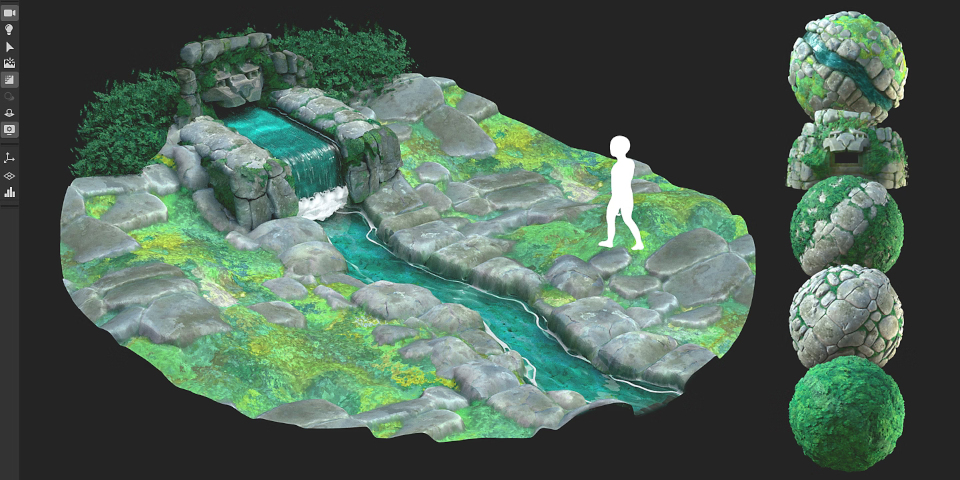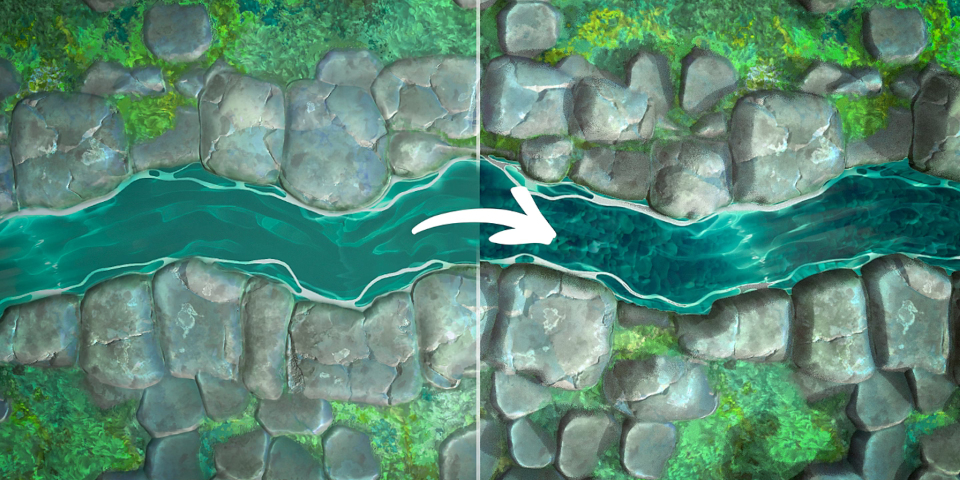Adobe releases Substance 3D Designer 15.0
Adobe has released Substance 3D Designer 15.0, the latest version of its material-authoring software for game development, visual effects and visualization work.
It’s a major update, introducing a new 3D renderer, the option to import an entire 3D scene – including in USD format – to edit materials in context, and reintroducing support for post effects.
The price of subscriptions to the software have risen since the previous release.

Import entire 3D scenes to edit materials in context inside Substance 3D Designer
Although Substance 3D Designer is designed for creating materials that can be exported to other DCC apps, it’s still necessary to be able to preview them accurately inside the software.
Substance 3D Designer 15.0 completely overhauls that workflow, with major changes to file import and rendering.
Users can now import entire 3D scenes, complete with textures, lights and cameras, and edit the materials they contain inside Substance 3D Designer.
Individual assets within the scene can be isolated for editing by [Shift]-clicking them in the viewport, then choosing the Show Only option in Substance 3D Designer’s new scene browser.
It is then possible to extract an asset’s existing textures into a material graph for editing; or to load a new graph and apply it to the asset.
The workflow is the reverse of the one most artists currently use, making it possible to edit materials in context inside Designer, rather than having to export them to another application.
Support for USD, glTF, PLY and STL files
It is also now possible to import 3D data in a wider range of formats: USD (including .usda, .usdc and .usdz), glTF, PLY and STL are now supported, as well as the existing OBJ and FBX import.
USD support is significant when it comes to editing materials in context, since any changes made to a scene can be exported non-destructively, as a new USD layer in the original file.

New renderer with rasterization and path tracing modes, and support for post effects
Substance 3D Designer 15.0 also introduces a new 3D renderer for viewport previews, supplementing the existing OpenGL and Iray renderers, both of which are now deprecated.
It has a rasterizer mode for real-time previews, and a path tracer mode for more accurate but less interactive previews. Both are capable of displaying scene shadows and the ground plane.
In addition, post effects have been reinstated, making it possible to tonemap renders, or to add bloom and depth of field effects.
Post effects were previously powered by Yebis, Silicon Studio’s middleware, but were deprecated in Substance Designer 12.2.
The new effects have been developed in-house, are compatible with both the rasterizer and GPU path tracer, and are saved as part of the scene state when saving a file.
Workflow and performance improvements
Workflow improvements include the option to control UV tiling independently for each axis when working with non-square textures.
The atomic nodes – the basic building blocks of Substance 3D Designer’s material graphs – now have ‘rich tooltips’ that illustrate their effects visually.
There are also performance improvements to texture baking, with the baker library “fully rebuilt” to use GPU-based bakers.
For pipeline integration, the software libraries used in Substance 3D Designer 15.0 have been updated to match the current CY2025 spec for the VFX Reference Platform.
Laying the groundwork for future feature updates
Adobe describes its work on Substance 3D Designer 15.0 as laying the foundation for future functionality.
Under the hood, the software has been rearchitected to USD as its internal scene description, which should make it easier to align with current workflows in visual effects and animation.
According to the video at the top of the story, and Adobe’s replies to comments on it, future updates will introduce support for the open materials standards MaterialX and OpenPBR.
Price and system requirements
Substance 3D Designer 15.0 is compatible with Windows 10+, RHEL 8.6/9.2+ Linux and macOS 12.0+.
It is available as a $199.99 perpetual license on Steam, or via Substance 3D subscriptions.
Substance 3D Texturing subscriptions cost $24.99/month or $249.88/year following a price rise earlier this year. Substance 3D Collection subscriptions cost $59.99/month or $599.88/year.
Read a full list of new features in Substance 3D Designer 15.0 in the online release notes
Have your say on this story by following CG Channel on Facebook, Instagram and X (formerly Twitter). As well as being able to comment on stories, followers of our social media accounts can see videos we don’t post on the site itself, including making-ofs for the latest VFX movies, animations, games cinematics and motion graphics projects.
